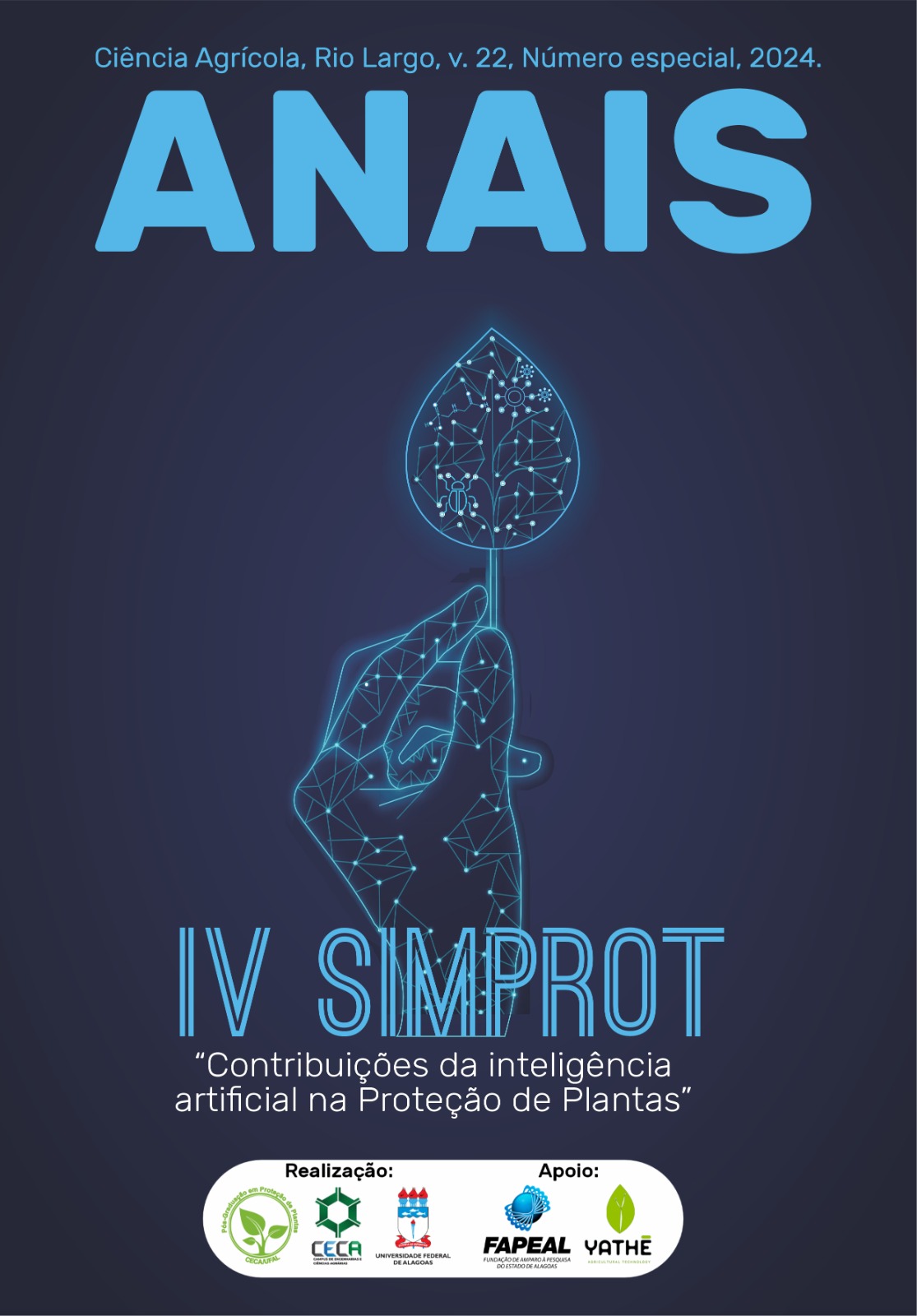FOOD PREFERENCE OF Sitophilus zeamais MOTS., 1855 (COLEOPTERA: CURCULIONIDAE) SUBMITTED TO DIFFERENT VARIETIES OF Zea mays L. (POACEAE)
DOI:
https://doi.org/10.28998/rca.22.18438Keywords:
Stored grain, antixenosis, Creole seeds.Abstract
Carriers of a wide genetic diversity, native seeds are better adapted to adverse conditions, have low dependence on external inputs, and contribute to the maintenance of agricultural productivity, thus obtaining a better return on production, even in challenging contexts. However, although resistant, they are frequently attacked by the main pest of stored corn, Sitophilus zeamais Mots., 1855 (Coleoptera: Curculionidae), which can result in deterioration of grain quality, causing millions of economic losses. Thus, the objective of this work was to evaluate the resistance between 5 different varieties of Creole maize to S. Zeamais, using the determination of food preference (Antixenosis). The bioassays were conducted at the Agricultural and Forestry Entomology Laboratory (LEAF), located at the Agricultural Engineering and Sciences Campus, Rio Largo-AL, where the grains were subjected to different physical conditions. The pairings used were: (I) Whole grains of Caatingueiro x Azteca; (II) Whole grains of Purple Palha x Aztec; (III) Jabutão x Aztec whole grains; (IV) Batité x Aztec whole grains. The data were analyzed using the non-parametric χ2 test and compared by the probability of error at 5%. From the results observed, there was a significant difference only in the combination of Azteca x Caantingueiro in 24h, demonstrating the preference of S. zeamais for Azteca grains. These results can contribute to management strategies and pest control tactics.Translator
Translator
Translator
Translator
Translator
Translator
Translator
Carriers of a wide genetic diversity, native seeds are better adapted to adverse conditions, have low dependence on external inputs, and contribute to the maintenance of agricultural productivity, thus obtaining a better return on production, even in challenging contexts. However, although resistant, they are frequently attacked by the main pest of stored corn, Sitophilus zeamais Mots., 1855 (Coleoptera: Curculionidae), which can result in deterioration of grain quality, causing millions of economic losses. Thus, the objective of this work was to evaluate the resistance between 5 different varieties of Creole maize to S. Zeamais, using the determination of food preference (Antixenosis). The bioassays were conducted at the Agricultural and Forestry Entomology Laboratory (LEAF), located at the Agricultural Engineering and Sciences Campus, Rio Largo-AL, where the grains were subjected to different physical conditions. The pairings used were: (I) Whole grains of Caatingueiro x Azteca; (II) Whole grains of Purple Palha x Aztec; (III) Jabutão x Aztec whole grains; (IV) Batité x Aztec whole grains. The data were analyzed using the non-parametric χ2 test and compared by the probability of error at 5%. From the results observed, there was a significant difference only in the combination of Azteca x Caantingueiro in 24h, demonstrating the preference of S. zeamais for Azteca grains. These results can contribute to management strategies and pest control tactics.
Downloads
References
Amaral, E. Resistência de Variedades de Milho Crioulo a Sitophilus zeamais Mots., 1855 (Coleoptera: Curculionidae), 2023.
Petersen, P.; Silveira, L.; Dias, E.; Curado, F.; Santos, A. Sementes ou grãos? Lutas para desconstrução de uma falsa dicotomia. Revista Agriculturas: experiências em agroecologia, Rio de Janeiro: AS-PTA, 2013, 10, 1, 36-46.
Girão Filho, J.E., Alcântara Neto, F., Pádua, L.E.M., & Pessoa, E. F. Repelência e atividade inseticida de pós vegetais sobre Zabrotes subfasciatus Boheman em feijão-fava armazenado. Revista Brasileira de Plantas Medicinais, 2014, 16, 3, 499-504.
Orém, A.; Miranda, G.V. Melhoramento de plantas. 4. ed. Viçosa-MG: UFV, 2005, 525p.
LORINI, I. et al. Manejo Integrado de Pragas de Grãos e Sementes Armazenadas. EMBRAPA, 2015.
Downloads
Published
Issue
Section
License
Copyright (c) 2024 Sabrina

This work is licensed under a Creative Commons Attribution 4.0 International License.
Termo de cessão de direitos autorias
Esta é uma revista de acesso livre, em que, utiliza o termo de cessão seguindo a lei nº 9.610/1998, que altera, atualiza e consolida a legislação sobre direitos autorais no Brasil.
O(s) autor(es) doravante designado(s) CEDENTE, por meio desta, cede o direito de primeira publicação da OBRA à Revista Ciência Agricola, representada pelo Centro de Ciência Agrarias da Universidade Federal de Alagoas, estabelecida na BR 104 Norte, Km 35, Rio Largo, Alagoas, CEP 57100-000 doravante designada CESSIONÁRIA, nas condições descritas a seguir:
O CEDENTE declara que é (são) autor(es) e titular(es) da propriedade dos direitos autorais da OBRA submetida.
O CEDENTE declara que a OBRA não infringe direitos autorais e/ou outros direitos de propriedade de terceiros, que a divulgação de imagens (caso as mesmas existam) foi autorizada e que assume integral responsabilidade moral e/ou patrimonial, pelo seu conteúdo, perante terceiros
O CEDENTE mantêm os direitos autorais e concedem à revista o direito de primeira publicação, com o trabalho simultaneamente licenciado sob a Licença Creative Commons do tipo atribuição CC-BY, para todo o conteúdo do periódico, exceto onde estiver identificado, que permite o compartilhamento do trabalho com reconhecimento da autoria e publicação inicial nesta revista, sem fins comerciais.
O CEDENTE têm autorização para distribuição não-exclusiva da versão do trabalho publicada nesta revista (ex.: publicar como capítulo de livro), com reconhecimento de autoria e publicação inicial nesta revista.
O CEDENTE têm permissão e são estimulados a publicar e distribuir seu trabalho online (ex.: em repositórios institucionais ou na sua página pessoal), já que isso pode gerar alterações produtivas, bem como aumentar o impacto e a citação do trabalho publicado.




